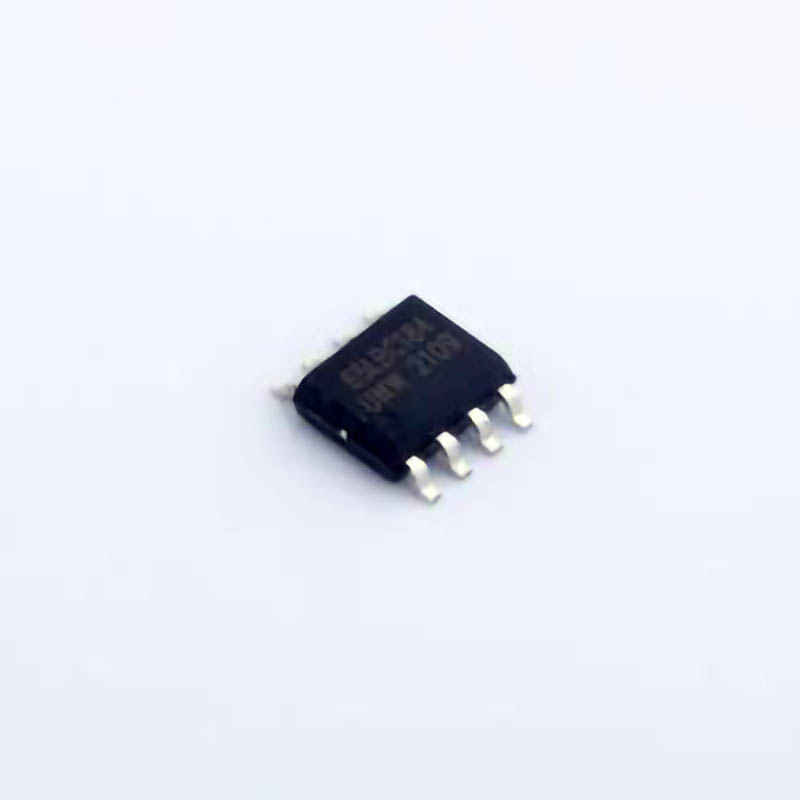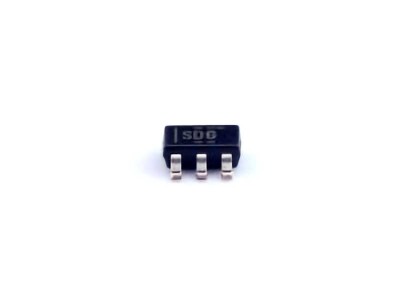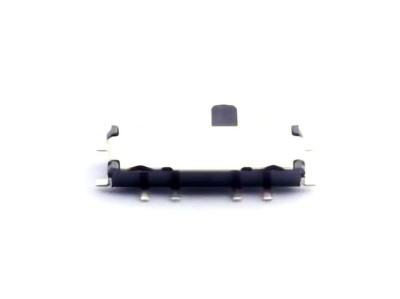
Understanding the SN65LBC184DR and Common Issues
The SN65LBC184DR is a robust RS-485 transceiver designed for data communication in industrial and automotive applications. This device provides differential signaling, which allows it to transmit data over long distances, making it ideal for multi-point communication systems. The SN65LBC184DR is designed to operate in harsh environments where reliability and stability are critical.
However, like any electronic component, users of the SN65LBC184DR may occasionally encounter issues that can affect its performance. In this first part of the article, we will review some of the most common problems that users face and how to diagnose them.
1. Signal Integrity Issues
Signal integrity problems are one of the most common issues encountered with the SN65LBC184DR transceiver, particularly in systems with long cable runs or high-speed data transmission. These issues often manifest as errors in the transmitted data, excessive noise, or complete signal loss.
Causes:
Cable Length: RS-485 is a differential signaling standard that allows long-distance communication, but cable lengths exceeding recommended limits can lead to signal degradation.
Improper Termination: RS-485 networks require termination resistors at the ends of the communication bus. The absence of these resistors or improper placement can cause reflections and signal distortion.
Mismatch in Impedance: A mismatch between the impedance of the cable and the termination resistor can lead to signal attenuation and reflections.
Solution:
Ensure that the RS-485 bus is properly terminated with resistors at both ends. Typically, a 120-ohm resistor is used for termination, which matches the impedance of the cable.
Use twisted-pair cables with a characteristic impedance of 120 ohms to minimize noise and interference.
Keep cable lengths within the recommended limits (typically less than 4000 feet for lower speeds).
Consider using signal repeaters or buffers for very long distances or high-speed data transmission.
2. Power Supply Problems
Another common issue is related to power supply. The SN65LBC184DR requires a stable power source to operate correctly. Fluctuations in the power supply can lead to erratic behavior, including data corruption or failure to transmit/receive signals.
Causes:
Voltage Fluctuations: If the power supply voltage is unstable, it can cause the transceiver to malfunction.
Insufficient Power: If the current drawn by the SN65LBC184DR exceeds the power supply's capacity, it can lead to voltage drops, affecting the device's performance.
Solution:
Check the power supply voltage to ensure that it is within the required range for the SN65LBC184DR (typically +5V or +3.3V depending on the application).
Use a regulated power supply with sufficient current capacity to meet the needs of the transceiver.
If using multiple devices, ensure that the power supply can handle the total current draw of all connected devices.
3. Incorrect Baud Rate or Data Format
The SN65LBC184DR is capable of operating at a wide range of baud rates, making it suitable for many different data communication applications. However, setting the wrong baud rate or using an incorrect data format can lead to communication errors or failures.
Causes:
Mismatched Baud Rate: If the baud rate of the SN65LBC184DR does not match the baud rate of the connected devices, data transmission may be unreliable or not occur at all.
Incorrect Data Format: The SN65LBC184DR can handle different data formats, including parity settings and stop bits. An incorrect configuration can cause communication errors.
Solution:
Double-check the baud rate settings for both the SN65LBC184DR and any other devices on the communication bus to ensure they are synchronized.
Review the configuration of data format settings, including parity, stop bits, and word length, to match the specifications of the other devices in the system.
Use software tools or microcontrollers with auto-baud detection capabilities to simplify the configuration process.
Advanced Troubleshooting and Solutions for the SN65LBC184DR
In the second part of this article, we will explore more advanced troubleshooting techniques and solutions for the SN65LBC184DR. These techniques are often necessary when dealing with more complex or subtle issues that may not be immediately apparent.
4. Differential Signal Imbalance
In some situations, the differential signals from the SN65LBC184DR may become imbalanced, leading to degraded performance and potential communication failure. This typically occurs when the transceiver’s outputs (A and B lines) are not at the correct voltage levels or are affected by external factors.
Causes:
Improper Grounding: If the device is not properly grounded, it may cause differential voltage imbalances.
External Interference: Electromagnetic interference ( EMI ) from other electronic devices or power lines can disrupt the differential signal.
Faulty Components: A damaged resistor or capacitor in the circuit may alter the voltage levels on the A or B lines.
Solution:
Ensure that the SN65LBC184DR is properly grounded to avoid signal imbalances.
Use shielded cables or twisted-pair cables with good grounding to minimize EMI.
Verify that all components in the circuit are functioning correctly. If necessary, use an oscilloscope to check the differential voltage between the A and B lines and ensure they meet the expected specifications.
5. Bus Contention and Overdriving
RS-485 systems are designed to allow multiple devices to communicate over the same bus. However, if multiple devices attempt to drive the bus simultaneously, it can result in bus contention. This occurs when two or more devices output conflicting signals, leading to data corruption or loss.
Causes:
Multiple Drivers Enabled: If multiple transceivers on the RS-485 bus are set to transmit at the same time, their outputs can conflict, causing bus contention.
Incorrect Direction Control: The SN65LBC184DR has direction control pins that allow it to switch between receiving and transmitting modes. If these pins are not properly controlled, the device may try to drive the bus while in receive mode, causing contention.
Solution:
Ensure that only one device on the RS-485 bus is driving the bus at any given time. This can be accomplished using proper direction control in the system’s firmware or hardware.
Use tri-state or open-drain outputs for devices that only need to listen to the bus but not drive it, reducing the likelihood of bus contention.
Implement a bus arbitration mechanism if multiple devices need to communicate at the same time. This can be achieved using time-division multiplexing (TDM) or other protocols to control access to the bus.
6. Transceiver Faults and Damage
Although rare, it is possible for the SN65LBC184DR to be damaged due to external factors such as static discharge, over-voltage, or overcurrent conditions. In such cases, the device may fail to operate correctly or stop functioning entirely.
Causes:
Electrostatic Discharge (ESD): Static electricity can damage sensitive components like the SN65LBC184DR.
Overvoltage or Overcurrent: Exposing the transceiver to voltages or currents beyond its rated specifications can cause permanent damage.
Improper Handling: Mishandling during installation or circuit design can lead to physical damage to the transceiver.
Solution:
Use ESD protection devices, such as TVS diodes (transient voltage suppression), to protect the transceiver from electrostatic discharge.
Ensure that the transceiver is not exposed to voltage or current beyond its rated limits. Check datasheets for specific maximum voltage ratings.
Handle the SN65LBC184DR with care during installation, and use proper anti-static precautions.
Conclusion
The SN65LBC184DR is an excellent RS-485 transceiver that provides reliable communication in a wide range of industrial and data communication applications. However, like all electronic devices, it may encounter issues that can impact its performance. By understanding the common troubleshooting techniques discussed in this article, users can quickly identify and resolve issues related to signal integrity, power supply, baud rate mismatches, and more. With the right solutions in place, the SN65LBC184DR can continue to provide robust, long-distance communication for critical systems.
If you are looking for more information on commonly used Electronic Components Models or about Electronic Components Product Catalog datasheets, compile all purchasing and CAD information into one place.


